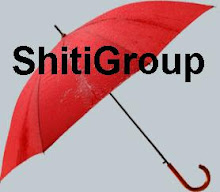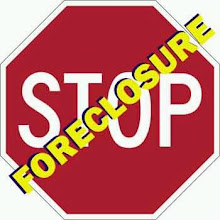By Cedric Muhammad
-Guest Columnist-
Updated Jan 9, 2008 - 6:23:00 PM
The Truth About Mortgage Bundling, SIVs, SPEs, and Sovereign Wealth Funds
“In fact, no one can enter a strong man’s house and carry off his possessions unless he first ties up the strong man. Then, he can rob his house.”
Mark 3: 27 (NIV Translation, Hebrew-Greek Key Word Study Bible)
“Those before them plotted, so Allah demolished their building from the foundations, so the roof fell down on them from above them, and the chastisement came to them from whence they perceived not.”
Surah 16:26 (Maulana Muhammad Ali translation, Holy Qur’an)
President George W. Bush, on December 17, 2007, gave one of the most succinct and clear depictions of the scope of the housing and mortgage crisis, pointing to the underreported role of some of the wealthiest players involved in the schemes. In a speech at Fredericksburg, Va., according to the official White House transcript of his remarks, President Bush said, “And the issue—the housing issue has changed. I can remember the first home I bought in Midland, Texas. I remember going down to the savings and loan and sitting down with the savings and loan officer and negotiating with the savings and loan officer. Well, this day and age you’re going to use mortgages that have been bundled, so the savings and loan doesn’t own the mortgage anymore, or the bank doesn’t loan [sic] the mortgage anymore, the local lending institute doesn’t loan [sic] the mortgage anymore: it’s owned by some international group, perhaps, or it’s been bundled into an asset. And so there’s hardly anybody to negotiate with.”
Here is the key section that caught my attention in what the President said, “...mortgages have been bundled, so the savings and loan doesn’t own the mortgage anymore, or the bank doesn’t loan [sic] the mortgage anymore, the local lending institute doesn’t loan [sic] the mortgage anymore: it’s owned by some international group...”
On the December 19, 2007 edition of my talk show, I said, “President Bush pointed the finger at the international bankers, did you all catch that? Excellent explanation by the President of why the hustling, pyramid scheme of the year is now coming down on us. Again, we got those mortgages so easily, not so that the bank could make money directly from us. No, we got that mortgage so easily so that the bank, the savings and loan, the lending institution, could then go to Wall Street and sell that loan and bundle it if you will.”
What President Bush and I, in different ways, were describing is the little known reason why it was so easy for so many of us to qualify for the purchase of a home, over the last 5 to 10 years. Many people have been puzzled as to why a lending institution would be so willing to give a mortgage to individuals with poor credit, little income, few assets, and bad payment histories.
The answer lies in following the money trail after we qualify to receive the mortgage.
After we get the mortgage, the lender sells that mortgage, along with others, to a larger international, investment or commercial bank, or, to a hedge fund or private equity fund, who then takes these separate mortgages—and the expected payments on them coming from us—and combines them into a bundle, and then uses the promise of the future income stream (the monthly mortgage payments from us) as collateral to take out a large loan (from another institution) of their own to finance something like a corporate merger or the restructuring of a major business.
I am aware of the amount of mortgages bundled together in one asset reaching as high as 4,000. I would not be surprised to learn of even greater amounts. This bundling process is known as securitization.
How does securitization work, again?
In a December 10, 2007 article in CFO magazine entitled, “Saving Banks: How the Mortgage Bailout Strains Accounting Efforts” we read, “In a securitization, a bank or other mortgage lender sells the future proceeds of a mortgage loan to a trust, or special purpose entity (SPE). The trust then pools them with other loans and issues bonds backed by the loan payments.”
This article makes clear that the current effort to contain damage from the subprime mortgage meltdown is stretching accounting safeguards that were put in place after the Enron scandal.
The mortgage crisis became publicly visible through the financial media in 2007 when it was learned that major banks like Bear Stearns, Bank Of America, Citibank and Morgan Stanley owned a dangerously large amount of these SPEs, some of which are also known as Structured Investment Vehicles (SIVs), and that they could no longer find a market to sell them to others. The reason there were no additional buyers for the SIVs/SPEs was because those who had previously been interested in them—including many hedge funds and private equity firms—began to see that the mortgage payments that supported them were not being made on time or at all.
Providing a clear and lucid description of the problem, The Los Angeles Times’ Tom Petruno wrote in the Dec. 21 edition of the newspaper:
* Enron revisited. At the heart of the massive accounting scandal at Enron Corp. in 2001-02 was the energy company’s use of so-called special purpose entities—enterprises that were effectively controlled by Enron but weren’t consolidated on its balance sheet.
The SPEs allowed the company’s executives to hide debt and losses and thereby distort the firm’s true earnings picture. Until it all blew up.
SPE, meet SIV—the structured investment vehicle. SIVs were created by major banks including Citigroup Inc. and HSBC Holdings Inc. to hold assets off their balance sheets. The basic idea was to borrow with short-term funds to buy long-term assets, such as sub-prime mortgage-backed bonds. If all went well, the profit was the difference between the cost of short-term money and the returns earned on the long-term assets.
What happened beginning in August, as the credit crunch deepened, was that lenders and investors began to balk at providing the short-term money that funded the SIVs. Bank shareholders had a rude awakening: It became clear that the banks managing the SIVs were on the hook to ride to the cash-strapped funds’ rescue—even though, technically, SIV assets weren’t the banks’ responsibility.
With the SIVs, nobody is alleging the kind of blatant fraud that went on with Enron’s SPEs. But SIVs smack of the same kind of obfuscation of liability.
Deception drains investor confidence, and confidence ultimately is the only thing that holds a banking system together. Why did the world’s financial geniuses need a refresher course on this point?
No one who understands the debt pyramid scheme we have all been participating in or observing in the last decade’s housing market can deny that the sub-prime mortgage-SPE-SIV crisis represents the kind of deception that “drains investor confidence,” and threatens the entire banking system.
The United States Treasury Department, The Federal Reserve and the European Central Bank have all taken unusual, unprecedented, and emergency steps to attempt to provide money and credit-liquidity to the banks holding the most SPEs/SIVs.
So far, those efforts have not produced the desired results and the holders of SIVs and SPEs are turning toward foreign countries and investors—primarily in Asia and the Middle East—to provide emergency capital and liquidity. The results have been staggering:
• Citibank has received a cash infusion of $7.5 billion from Abu Dhabi’s sovereign wealth fund.
• China’s sovereign wealth fund has invested $5 billion for a piece of Morgan Stanley.
• Singapore’s sovereign wealth fund is poised to make a $4.4 billion investment in Merrill Lynch.
• Singapore’s sovereign wealth fund also has invested $9.72 billion into UBS, the large Swiss Bank.
There may be more such investments made by sovereign wealth funds in struggling American and European-based international banks, on the way. China’s wealth fund has an estimated $1.2 trillion at its disposal. Abu Dhabi is sitting on $875 billion. And Russia has $300 billion ready to buy up shares in these increasingly desperate banks.
In all, there are almost 40 sovereign-wealth funds, with approximately $2 trillion in assets. That amount is expected to rise to $13 trillion next decade.
So far, the foreign sovereign wealth funds have taken only minority stakes in these banks, stating that they wouldn’t be active in making management decisions.
But of course that might all change—remember, beggars can’t be choosers, and he who pays the piper calls the tune.
Never forget, this all has everything to do with your mortgage payment.
(Cedric Muhammad is a business and political economist who advises entrepreneurs and small businesses through his company, CM Cap (http://www.cmcap.com/). He can be reached via e-mail at cedric@cmcap.com. His weekly “Cedric Muhammad and Black Coffee Program” can be viewed every Wednesday from 12 p.m. to 4 p.m. EST at The Black Coffee Channel by visiting http://www.blackcoffeechannel.com/.)
http://www.finalcall.com/artman/publish/article_4275.shtml
Friday, January 22, 2010
Subscribe to:
Post Comments (Atom)












No comments:
Post a Comment